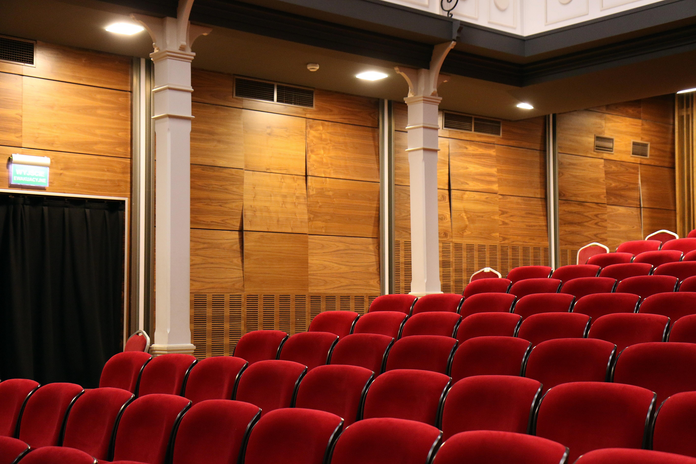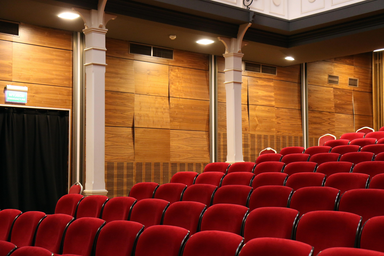Spoiler Warning
This past October, Wes Anderson dropped his latest masterpiece—a nearly two-and-a-half-hour movie described by IMBD as “a love letter to journalists.” The film, The French Dispatch, follows the lives of several journalists for an American publication, based on The New Yorker. Its star-studded cast, paired with a phenomenal soundtrack and Anderson’s relentless attention to detail, have created a film you can’t help but want to see again.
Let’s rephrase that. You can’t help to want to see again if you are a dedicated fan of the movies. Like many of Anderson’s films, it is not for the individual who simply wants to see a blockbuster as the source of two hours of entertainment. The French Dispatch is an exploration of cinema as an art form. In an undeniable culmination of Anderson’s unique style, the film breaks nearly every established cinematic rule. For example, he continuously puts his characters in the center of the frame. He also borrows from that of other great directors, by utilizing several long-shots throughout the movie. Although he is intentional about every color, sound, camera angle and piece of dialogue, the abundance of details and complexity of the plot could be initially confusing to the first-time Anderson movie-goer.
In this film, Anderson takes the term “mise-en-scene” to a new level. He interweaves several different cinematic styles throughout the different stories told throughout the anthology film. The plot revolves around the death of the publication’s editor when the staff reflects on their own time as a part of the publication under their leadership. The audience is taken through four of the writers’ experiences while writing for the newspaper under different topics.
The first of these is that of the cycling reporter played by none other than Owen Wilson. The reporter, named Herbsaint Sazerac, gives a tour of the French town of Ennui. The tour is a comedic introduction to the town that would act as the central location to all the journalists’ stories in the film. The shortest of the four journalist’s stories would take several viewings of Sazerac’s report to grasp every detail Anderson poured into the scene. One of these is when Sazerac is showing several landmarks and comes across the Le Sans Blague Cafe, the very cafe that comes back in a later journalist’s recounts of the French student protests of 1968.
The next story is undeniably my favorite. In summary, it tells the story of a prison inmate who is extraordinarily talented at art and a man who attempts to exploit him. There are several scenes in this story in which the audience could yell to hit pause. The random frozen shot could be viewed as a work of art due to Anderson’s phenomenal use of colors and staging of characters and props. The third story follows the journalist Lucinda Krementz, played by Frances McDormand, as she interacts with members of the “Chessboard Revolution” in Ennui. She has a brief affair with one of the leaders of this student revolution, a young man by the name of Zeffirelli played by Hollywood’s current heartthrob, Timothée Chalamet. It becomes evident that the trend of this film seems to be that each journalist’s story becomes more daring and far-reaching from reality than the previous.
The final story fits right along with this pattern, told from the perspective of a food critic named Roebuck Wright. This story might be perceived as the most extraordinary due to the nature of its medium. In his recount, there are numerous styles of cinematography interwoven throughout. Wright recounts the article this story revolves around verbatim while on a talk show. His set is filled with bright colors and upbeat charismatics. The story plays out in front of the audience’s eyes, showing his journey through a police station to get to the dinner he is meant to be writing on. The action-packed story that ensues incorporates black and white color frames, shootouts, car chases and even a moment where the movie transitions in and out of animation, all for a food review article.
The epilogue of the film shows the different journalists, all with their wildly different experiences under the editor, coming together to write his memoir. The film is all over the place but tied together perfectly in a way only Wes Anderson could do. It is a comedy, a romance and an action film in one. It is whimsical yet startling. It is a film so rich in details that it would take viewing after viewing of the piece to catch them all. It is a celebration of journalism and those that inspire it, as well as the unsung heroes who dedicate their livelihoods to its art.
Want to see more HCFSU? Be sure to like us on Facebook and follow us on Instagram, Twitter, TikTok, YouTube and Pinterest!


